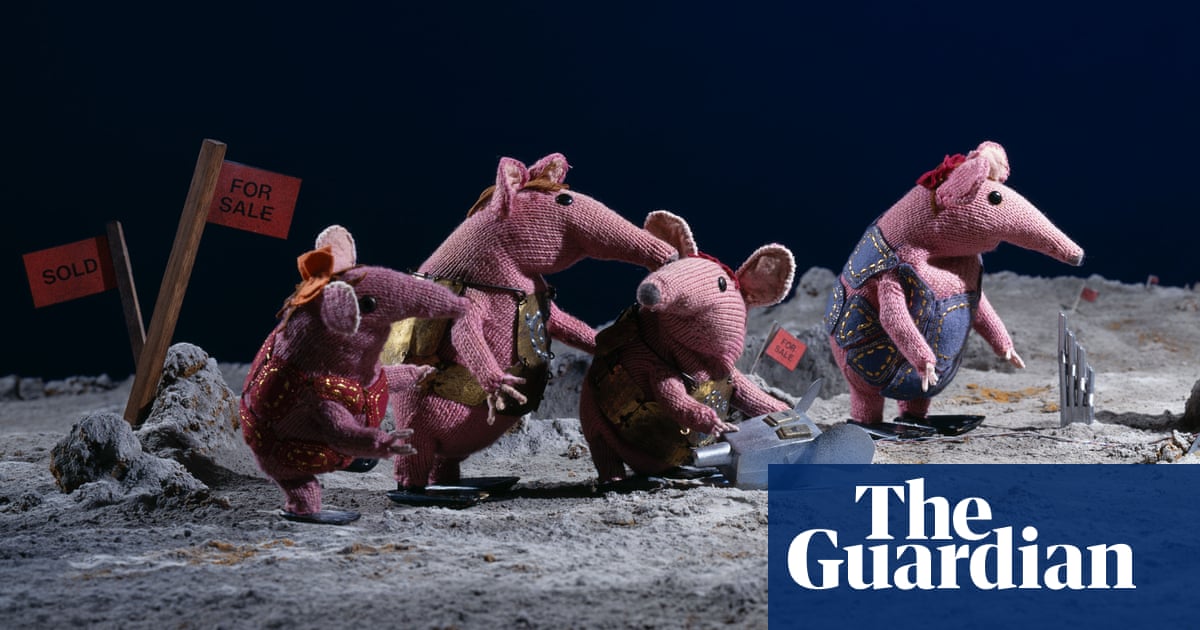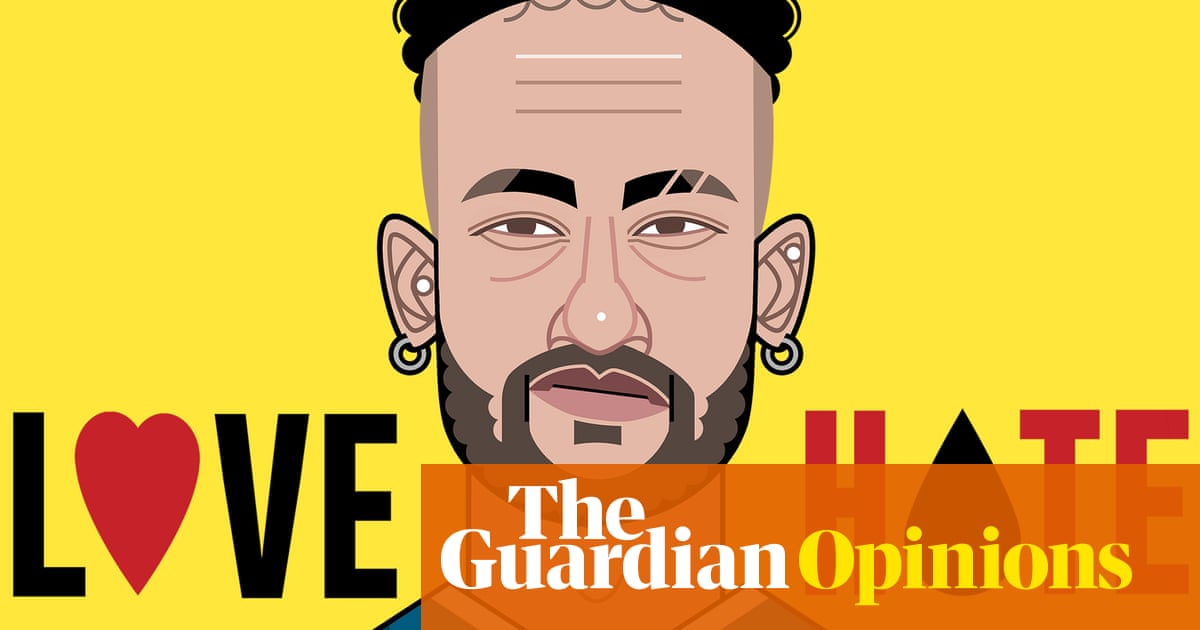
orna Simpson is holed up in Los Angeles with her actor daughter right now. She’s been spending lockdown doing one of her favourite things: reflecting on how people present themselves when out in public. All this people-watching has put her in mind of the 1990s, when she would go wig-hunting in Fulton Mall, a blue-collar shopping centre near her home in New York.
“Shop after shop sold all sorts of wigs,” says the 59-year-old. “Human hair, yak hair, synthetic hair.” Simpson bought as many as she could, in every style she saw: from platinum-blonde “Lana Turner” wigs to fake afros and braids. She transferred photographs of each one on to panels of felt before hanging them alongside such seemingly disconnected phrases as: “First impressions are the most lasting.” The wigs were a “surrogate”, she says, a way to explore “the person we see ourselves to be”.
It is hard, now, to appreciate how prescient her work was. When Simpson exhibited these wigs, the experiences of African Americans were hardly recognised in galleries. Her wigs seemed almost like scientific specimens, more evidence in her examination of identity and presentation, in particular how the black experience was left out of general ideals of beauty.
Simpson is now one of America’s most significant artists, yet she is not interested in creating brand new images. Instead, she recycles those that already exist, giving them new meaning in a new context. Give Me Some Moments, an online exhibition by Hauser & Wirth London, has just opened, showcasing Simpson’s fusion of found photography, collage, installation, video and, most recently, a dark and turbulent form of painting.
Alongside Carrie Mae Weems and Kara Walker (creator of the recent slave-trade-inflected fountain at London’s Tate Modern), Simpson is now spoken of as perhaps the leading figure in a generation of black, female artists who forced New York’s art world to wake up and pay attention to their concerns. She lives and works in Fort Greene, Brooklyn, a few blocks away from where she was raised by her father, Elian, a social worker who escaped Castro’s Cuba in 1958, and her mother, Eleanor, a secretary at a Manhattan hospital who came from an African American family in Chicago.
She took to photography young. Bed-bound with flu one winter, Simpson cut out and saved up coupons from boxes of Kleenex tissues for a promotional Polaroid camera. Her first portraits were of her beagle collie. Simpson studied photography in New York before starting out as a documentary photographer, travelling around Europe and north Africa with her boyfriend.
“We had clothes, cameras and film, and all we did was take photographs,” she says. Soon after, her then boyfriend became a member of Magnum, and Simpson met such doyens as Josef Koudelka. “I got to really see the formal mechanisms of street photography,” she says. “I got to understand the industry of it, the kind of people that worked in it. And I found the way their work was interpreted was so different from the way they lived their lives. I felt there was more I wanted to say with photography.”
Simpson was doing graphic design for a travel company when she met Weems, who told her of a performance-based graduate art class at the University of California in San Diego. “I needed a change of scene,” Simpson says. “It was a cold, sleety New York evening. When Carrie started talking about the Californian beach, I was sold.” She laughs. “I remember getting a brochure – and that being the only impression I had of the entire place. I went on a lark.”
In San Diego, she started focusing on the portraits of black women she saw in magazines, in stories as well as adverts. She would cut them out and use them in collages, adding suggestive phrases from elsewhere in the magazines. This early work, Simpson says, came from a dawning interest in “how society regulates our bodies and how we think about ourselves”.
How did these pictures go down? “No one really understood the kind of work I was making,” says Simpson. “It was met with a lot of silence.” But back in New York, she attracted immediate attention. “There was a huge response, it was like night and day. Suddenly I found this really engaged conversation.”
Simpson’s early creations were astonishingly forthright. She remembers, while enduring temporary work in a large office, creating Five Day Forecast. In this collage, the image of a cross-armed woman in a plain dress is repeated five times, her head cropped off in each case and a day of the week – Monday to Friday – taking its place. Below runs a series of words: misinformation, misidentify, mistranslate. They are, clearly, a pun on “miss”.
A little later, she made Untitled (Two Necklines), in which two black female necklines are positioned on either side of a column of words: “ring, surround, lasso, noose, eye, areola, halo, cuffs, collar, loop”. Below this is a red plaque that reads “feel the ground sliding from under you”, a phrase that suggests lynching. Then came C-Rations in 1991, which juxtaposed a paper plate reading “not good enough” with the body of a black woman branded with the phrase: “But good enough to serve.”
As Simpson’s star rose, her art softened and took on more emotional nuance. A series from 2009 comprised images Simpson sourced from eBay. “I found hundreds of original ‘pin-ups’ a woman had taken of herself in Los Angeles in 1959,” she says. “I was captivated by this young black woman living during the Jim Crow era who had this aspiration of being a movie star – of being photographed, of performing for the camera. I decided to extend her project.”
In 2010, shortly after her father’s death, Simpson remembers sorting through boxes of yellowed Ebony and Jet magazines that had once belonged to her grandmother. “As a child,” she says, “they were in almost every household. I found myself looking at these older magazines, thinking about the way they spoke to a black audience, how they have become a marker of time and thought. And I just started to play with them.”
Simpson screenprinted vintage portraits from the magazines on to clay-board and fibreglass panels. “And then I got a ton of ink together,” she says with a laugh, “and I decided to experiment. I just went into a whirlwind of working.”
The Nigerian curator Okwui Enwezor included Simpson’s first five paintings, which measured more than nine-feet tall, in the 2015 Venice Biennale. Shortly afterwards, he died of cancer. It drove Simpson to delve further into this new form. She allowed herself to work expressively and largely on instinct, with little sense of how each piece might turn out.
The results are perhaps Simpson’s most accomplished to date: the pin-sharp faces of poised black women from long ago stare out beneath roiling indigo skies, glacial landscapes and churning seas. When Simpson showed them in her home city, she spoke to the New York Times about the difficulties of being seen only as a black artist: “Just as the Caucasian figure in contemporary art is seen as universal,” she said, “the black figure of African descent should be too.”
Is it frustrating to still have to point this out? “Nothing surprises me any more,” she says. “In America, there are refusals to understand or acknowledge that things are far more complicated than we would like them to be. Any society, or self, constructed to always separate itself from the other is doomed.”
In LA, Simpson is “slowly edging back to work”. She will drift downstairs in the morning to find her daughter Zora, who will soon graduate from Columbia University, plugged into her laptop. “She has much more of a schedule than me,” Simpson says. “But I’m spending every day trying to make something.” The Covid-19 crisis has, she says, had a deep impact on her. “There are days when I’m like, ‘OK, we’ve got this.’ And there are days when I’m like, ‘OK, that’s the fourth time I’ve cried for an hour.”
We’re speaking on the day President Trump suggested American citizens could inject themselves with bleach. “There’s an insanity to the US government’s response,” she says. “It’s breathtakingly ignorant and dangerous.” Simpson has already lost close friends, including the critic and art historian Maurice Berger, to the virus. “All these waves of death,” she says.
Simpson began her career just as New York was at the centre of the Aids epidemic. She lost friends to the disease and saw others who had it stigmatised. “The Aids crisis was very similar to now – all the misconceptions, all the negative responses.” She remembers it as a time when “victims were vilified, families would disown their children. Someone would die and half the time there wasn’t a funeral. But I wouldn’t say anything has prepared me for now.”
America is in a unique state of denial, Simpson believes. “There was a lot of ignorance during the 1980s. Now we’re seeing the spectre of that again. The lack of compassion. People’s refusal to face science. The level of governmental ignorance – of power based on ignorance – has endangered people’s lives, literally.”
Can anything good come out of this? “So many things will change after coronavirus, and we will learn a lot of things scientifically,” says Simpson. “But do we have the wherewithal and the strength to start thinking of everyone, rather than further disintegrate into clans and tribes?” She pauses. “I think we need to.”












